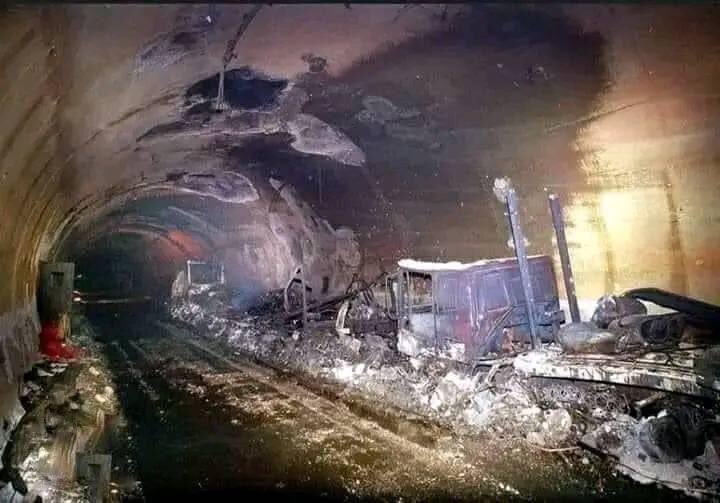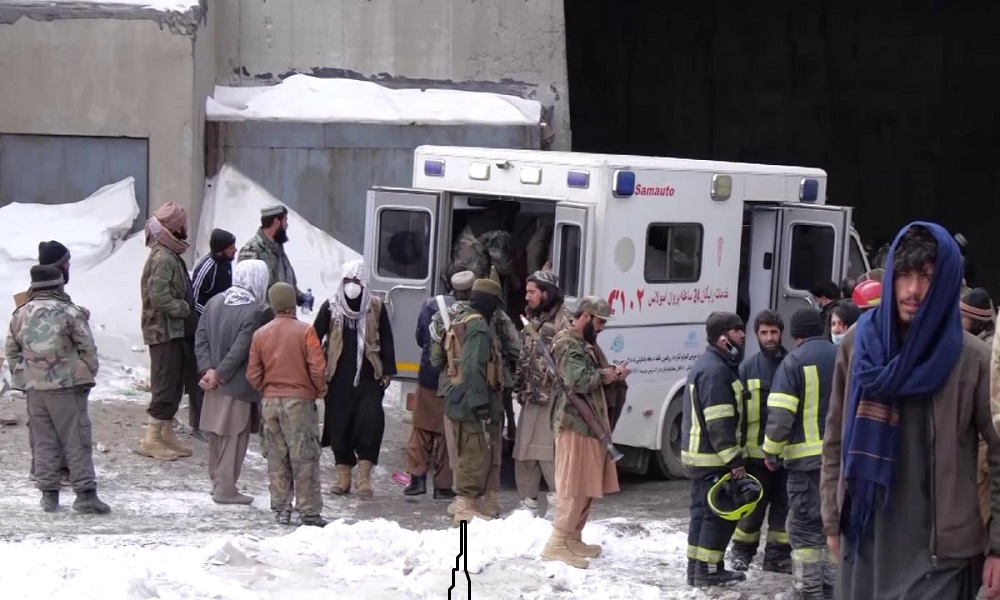Asia
Salang Tunnel tragedy: 87 killed and 86 wounded

A fuel tanker caught fire in a tunnel north of the Afghan capital of Kabul, claiming 87 lives and injuring nearly 90 other people.
The cause of the fire that broke out at the Salang Tunnel, which is a crucial link between the country’s north and south, was not immediately clear. The tunnel, located around 80 miles north of Kabul, was originally built in 1964.
A Taliban spokesman for the Public Health Ministry, Sharafat Zaman Amarkhail said the number of fatalities climbed to 31 people. He also confirmed the injuries of 37 others. Taliban pulled out more bodies from the site of the blast and rescuers continued to search for survivors until Monday.
However, a local media outlet Amu TV, who spoke to survivors of the crash in hospital who had suffered burns and tweeted: “In this event, at least 87 people died and 86 others were injured.”
Oil was trickling from the truck
There was a leakage in the oil tanker that caught fire, an eye-witness told harici. “I saw that oil was dripping from the truck, and I was driving on the opposite side. I shouted at the driver that there was an oil leakage but the driver did not take lessons and continued driving,” he said.
“There was a big explosion that occurred as we were just about to exit the tunnel just a few minutes after I tried to inform the driver. We are safe but many people were killed and wounded,” Ajmal, who like many Afghans goes by a single name, said.
Flame and black smoke covered the tunnel and the blaze spread to other vehicles before it was put out the next day. Several vehicles were totally charred after the incident, and several people went missing.
We waited until firefighters came from Kabul, a Taliban official told harici. “We were late, and the rescue team reached almost five hours after the incident. Many people lost their lives to their burning wounds,” the official said on condition anonymity as he was not authorized to speak to the media.

Ambulance at the front gate of Salang Tunnel.
Eventually the rescue teams entered the tunnel and were able to extinguish the fire after several hours of delay. “It was a difficult task, the tunnel was covered with flame smoke and we had no other option but to pull the vehicles and victims out of the tunnel one by one,” he added.
Many people left their cars and ran towards the exit of the tunnel, but many others, mainly the woman and small kids, were trapped. A number of people escaped halfway but went back for their loved ones, but neither saved himself nor them.
One of the victims was identified as Mohammad Hanif Nashir, head of the department for the distribution of electronic ID cards, who was a resident of Kunduz province. Nashir along with his wife and three children lost their lives in the Salang Tunnel tragedy.
Some of the bodies were severely burned
Health officials in Parwan province said that some of the bodies were severely burned, and many more were under medical treatment for light and heavy burn injuries.
A senior health official said that among the dead it was very hard to identify who was a male and who was a female. Another official said that the number of casualties could still rise because those people, who were near to the tanker, perished and their bodies were not found so far.
The Ministry of Public Works said the Salang pass will be closed for traffic until further notice. The ministry also said that 13 trucks loaded with gas and coal have been taken out from the tunnel.
The Taliban Defense Ministry also said that military helicopters along with medics and first aid teams were sent to the scene.
Defense Ministry Spokesman Enayatullah Khwarazmi said that at least 100 Taliban forces were engaged in the rescue operation.
The circumstances of the oil tanker explosion are still unclear.
It is worth mentioning that the Salang pass is often shut for days because of accidents, heavy snowfall and avalanches during the winter months. In 2010, avalanches killed more than 150 people and wounded hundreds more in the Salang pass.